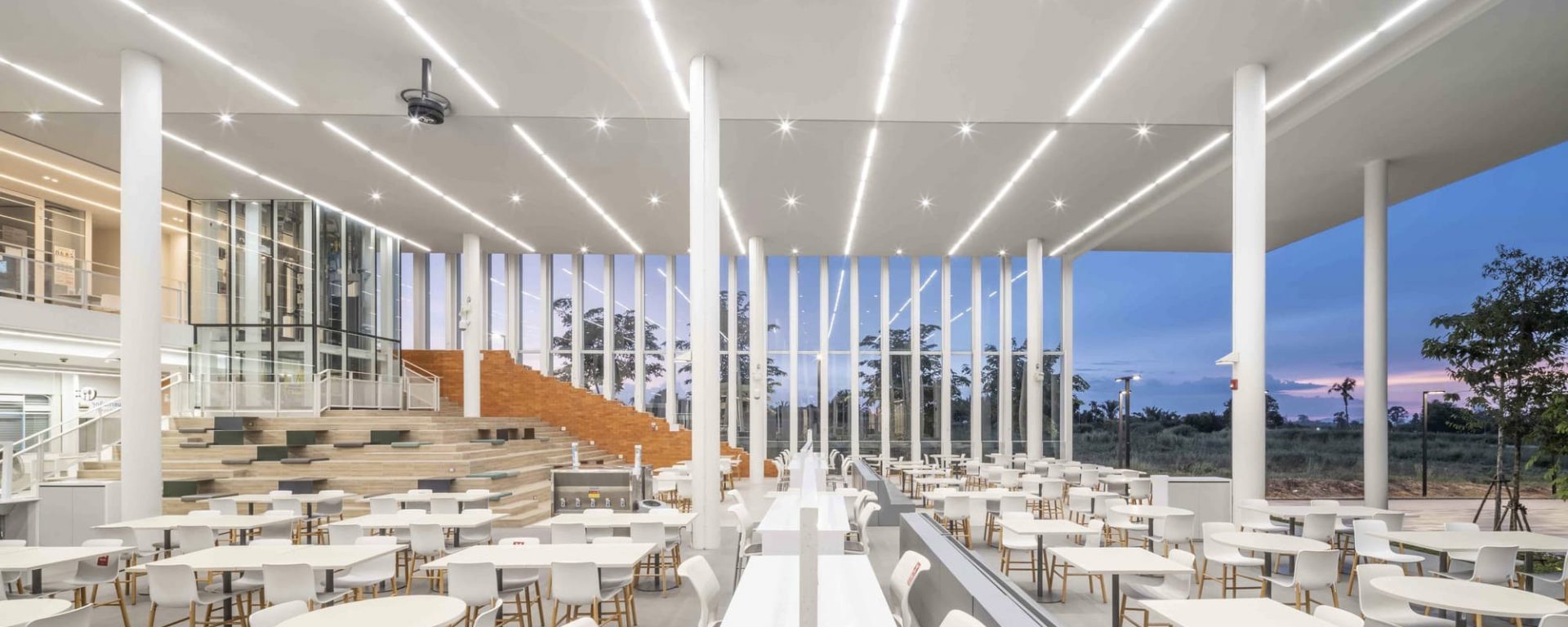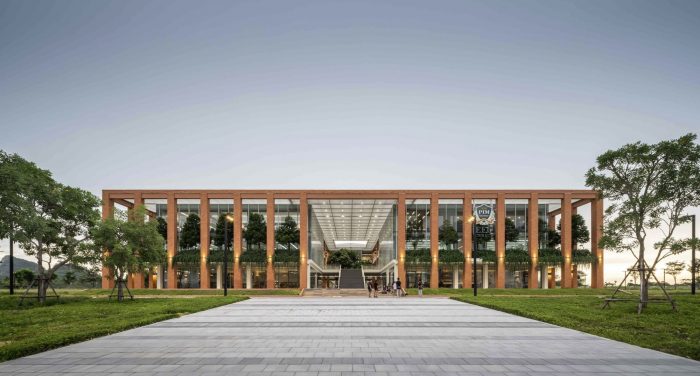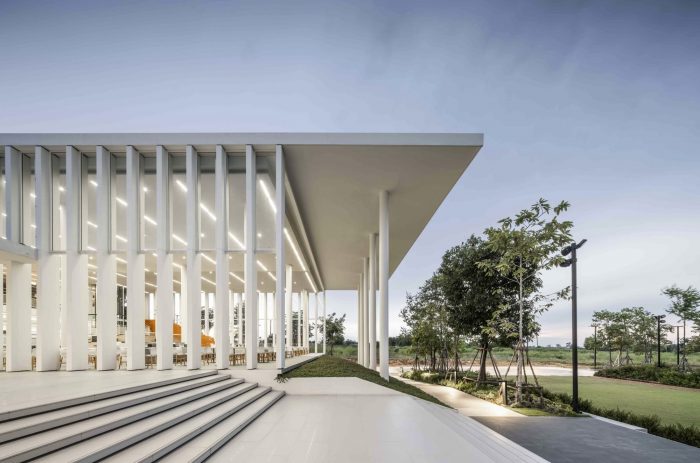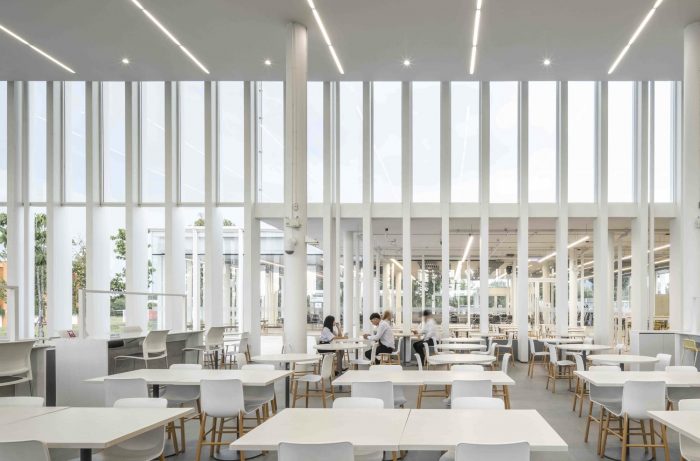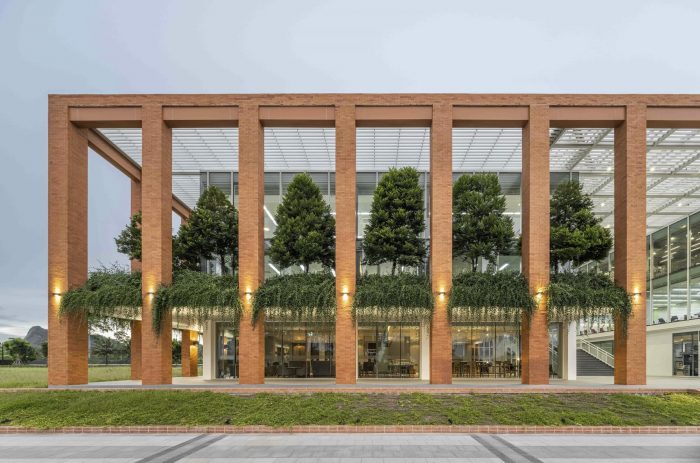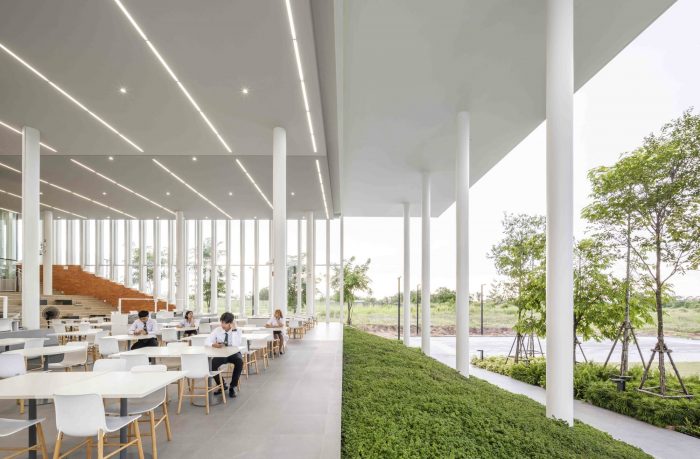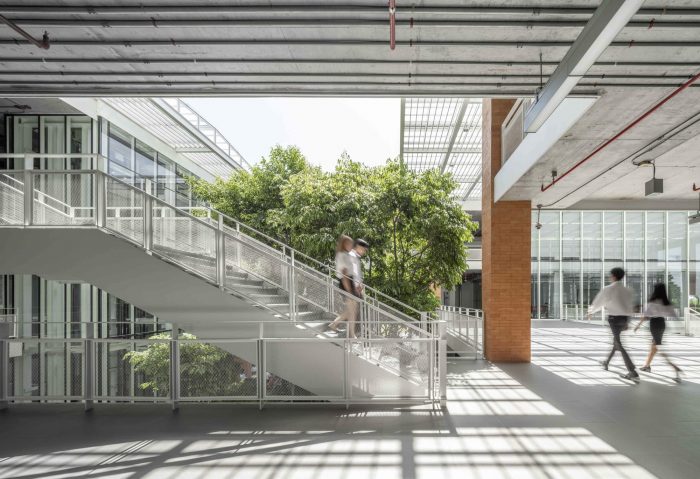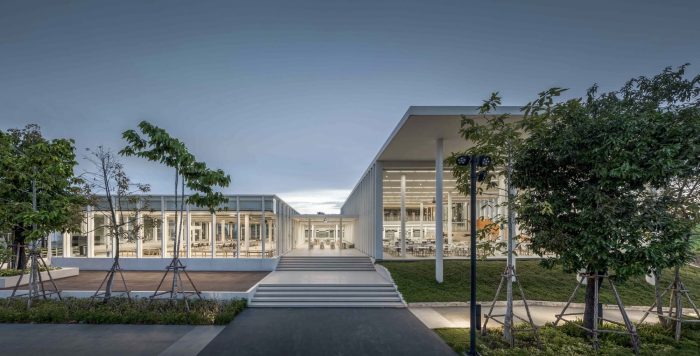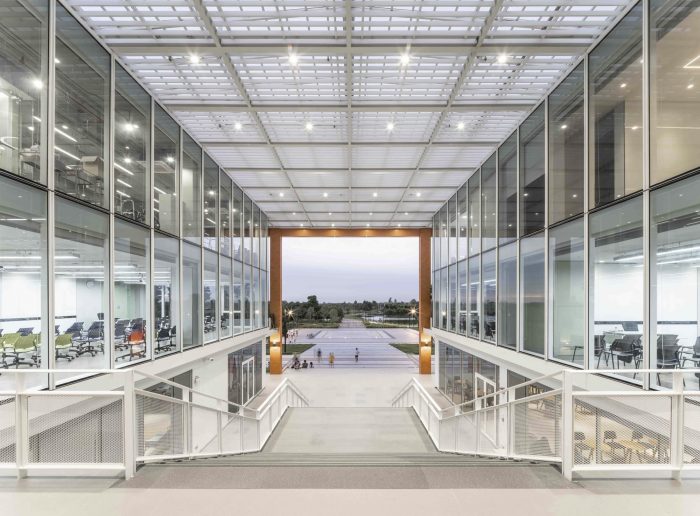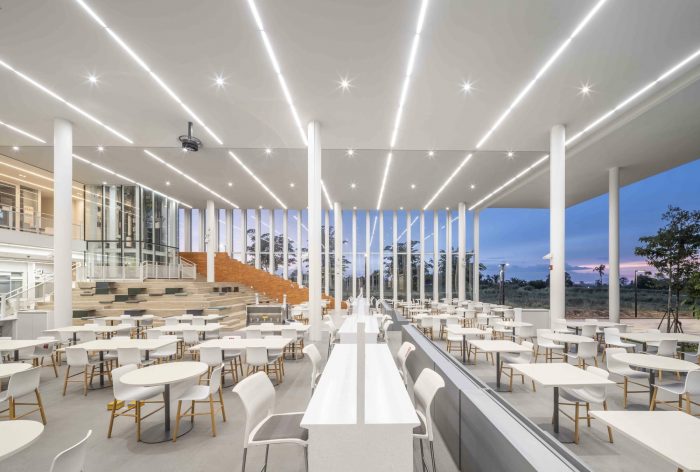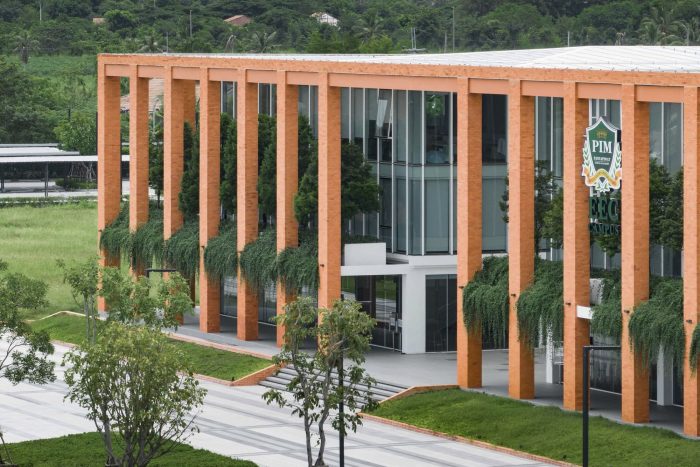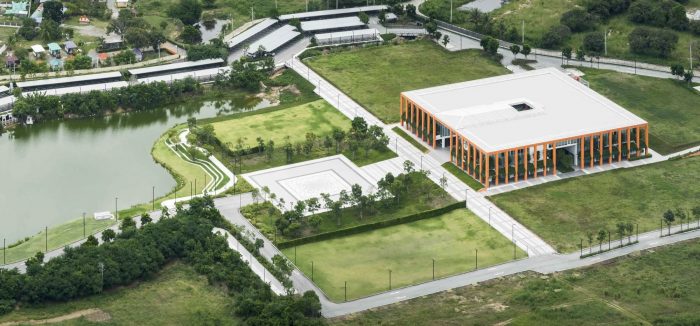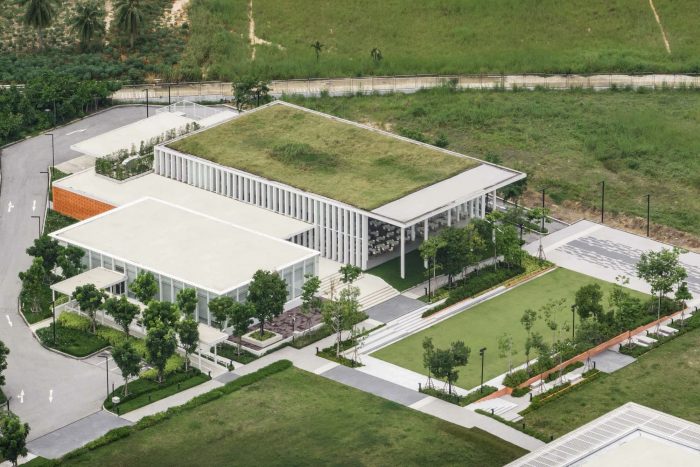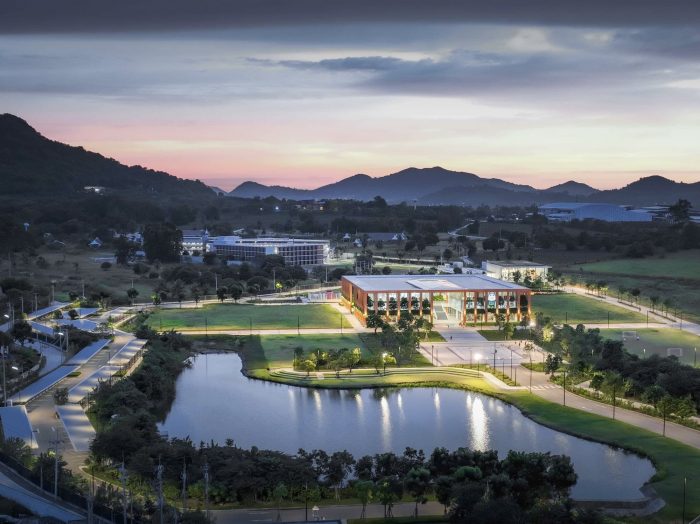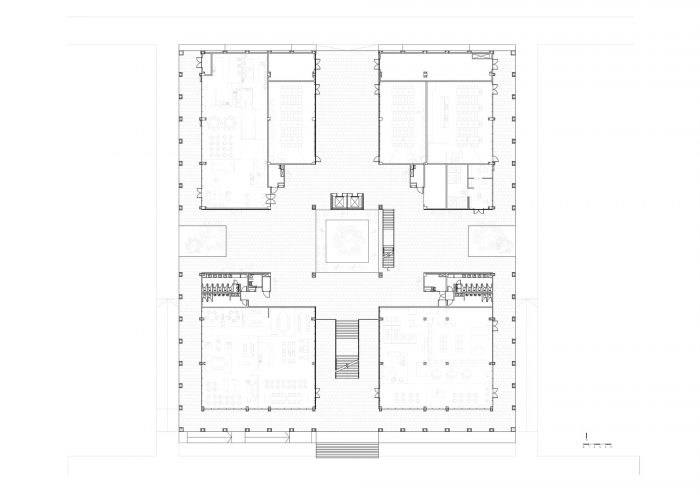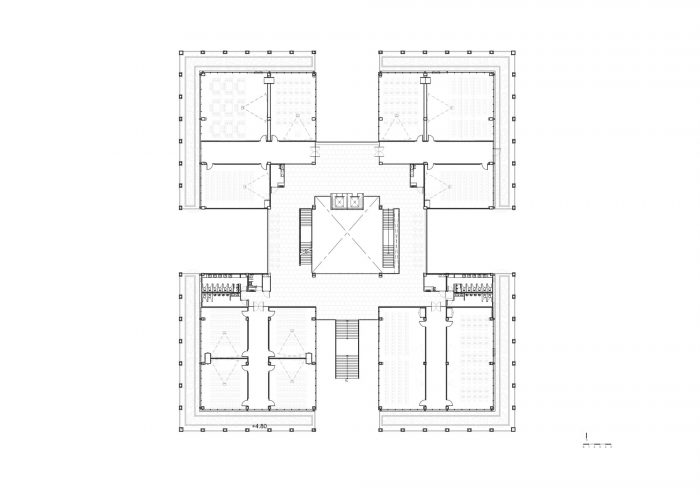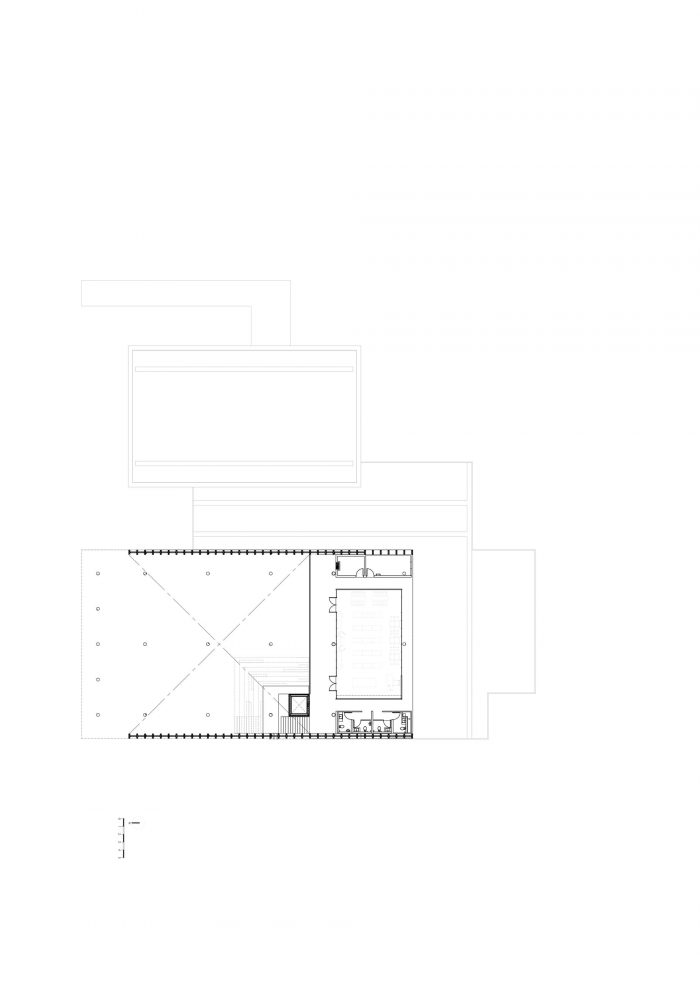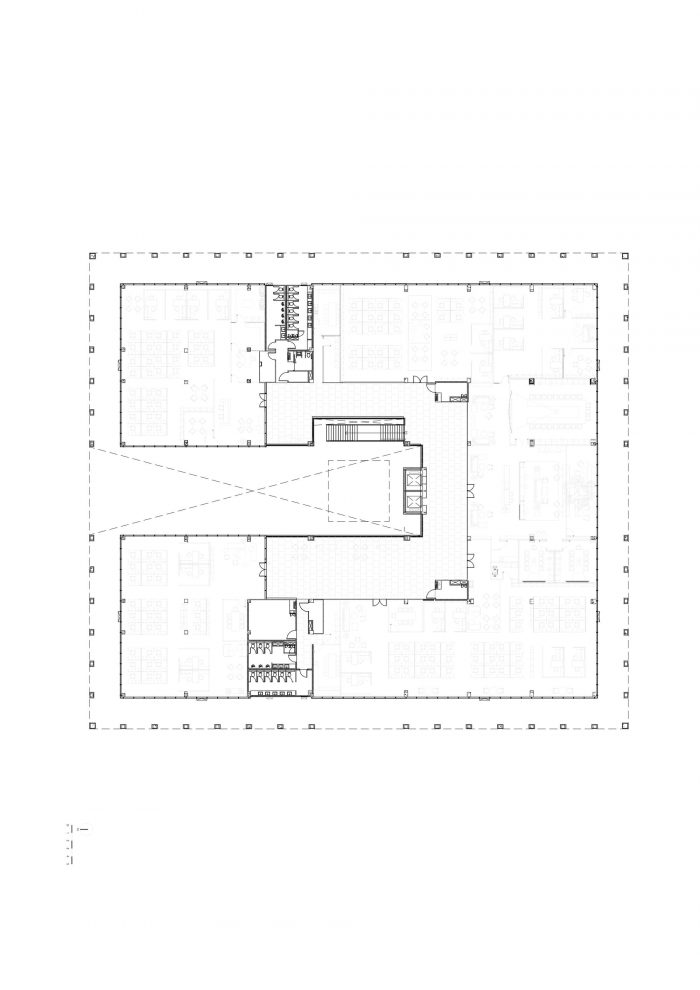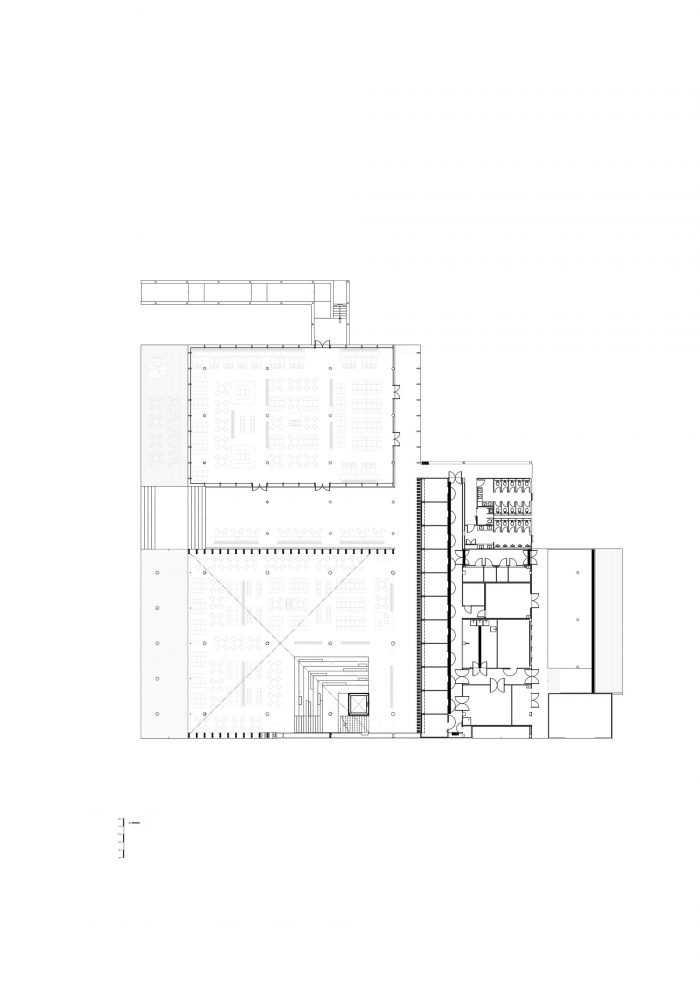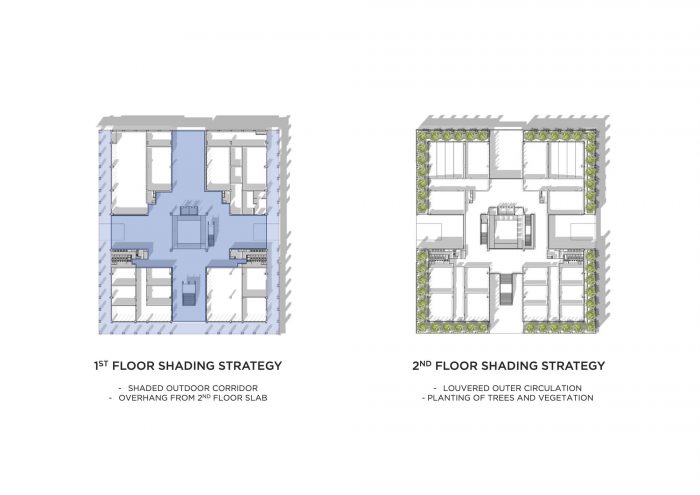潘亚比瓦管理学院的目标是将该机构扩展为支持人力发展的中心,以满足东部特别开发区工业部门的制造需求。该校园的目标是在99赖的面积上容纳多达5000名学生,并为未来的发展扩张提供条件。由于没有明确的校园扩建方案或建议的用户数量,主要的挑战是创造一个灵活的设计,可以适应各种功能、用途和活动。
Panyapiwat Institute of Management has a goal to expand the institution into the hub to support the development of manpower to meet the manufacturing demands of the industrial sector in the Eastern Special Development Zone (EEC). The campus aims to accommodate up to 5,000 students in an area of 99-rai, with provisions for future development expansions. As there was no clear program for the campus expansion or proposed number of users, the main challenge was to create a flexible design that could be adapted to a variety of functions, uses, and activities.
我们采用了 “返璞归真–与自然学习–知识无处不在 “的设计理念,以创造一个鼓励体验式学习的环境,通过简单地与自然和谐相处,并结合自然来帮助创造一个有利于知识和经验交流的环境。由于注重在自然环境中为学生和教师创造合作空间,用户可以获得知识,交流思想,并创造新的创新。这强调了 “知识无处不在 “的概念,而不仅仅是在课堂上。这里还有支持最新学习技术的空间,以及可以轻松适应各种用途的各种区域。
The design concept of “Back to Basics | Learning with Nature | Knowledge Is Everywhere” was applied to create an environment that encourages experiential learning through simply living in harmony with nature, and by incorporating nature to help create an environment conducive to the exchange of knowledge and experiences. With a focus on creating collaborative spaces for students and teachers within the natural environment, users can gain knowledge, exchange ideas, and create new innovations. This emphasizes the concept of “Knowledge is Everywhere” not just in the classroom. There are also spaces that support the latest technology in learning, as well as various areas that can be easily adapted to accommodate a wide range of uses.
自项目启动以来,从总体规划到建筑设计、机电系统和景观建筑,都展示了建筑中的被动设计概念。所有这些都促进了对自然的研究和联系。注重可持续发展和保护自然,对建筑用途和方向的精心规划减少了热量,并将对空调空间的需求降到最低。总体规划将建筑物之间的绿色空间纳入其中,并鼓励使用可再生资源,如保留雨水和重复使用灰水。绿色屋顶可以减少建筑物内的热量以及周围地区的热岛效应。该项目设计旨在提高用户对节能措施的认识,例如,通过分配停车位和促进自行车道的使用。
Since the project’s inception, the concept of passive design in architecture is showcased, from Master Planning to architectural design, M&E systems, and landscape architecture. All of this facilitates the study and connection with nature. Focusing on sustainability and preserving nature, careful planning of the building uses and orientation reduces heat and minimizes the need for air-conditioned spaces. The Master Plan incorporates green spaces between buildings and encourages the use of renewable resources, such as rainwater retention and reusing gray water. Green roofs reduce heat within the buildings as well as the heat island effect in the surrounding areas. The project design is intended to raise user awareness of energy conservation measures, for example, by allocating parking spaces and promoting the use of bicycle lanes.
此外,天然原材料的利用需要较少的复杂的制造和施工过程。化学品的使用,如外墙涂料,也受到限制,以促进项目的环境友好形象。强调使用本地植物的景观设计,减少了维护,并以有机方式生长。这是受宫胁博士的自然森林种植概念的启发,大树是从幼苗开始种植的,而不是完全生长后移植到项目上。这种方法确保了树木在未来的可持续性和长寿。
Furthermore, the utilization of natural raw materials requires less complicated manufacturing and construction processes. The use of chemicals, such as exterior paint, was also limited to promoting the project’s environmentally friendly image. Landscape design that emphasizes the use of native plants reduces maintenance and grows organically. This is inspired by Dr. Miyawaki’s concept of natural forest planting, in which large trees are planted from seedlings rather than transplanted, fully grown, onto the project. This method ensures the sustainability and longevity of the trees into the future.
Architects: Architects 49
Area : 80000 m²
Year : 2022
Photographs :DOF Sky|Ground
Manufacturers : A.P.K. Dawkoo, Interpon, OREGON ALUMINIUM, V&P
Structural Engineering : Architectural Engineering 49
Architects : Wanpriang Pankhem, Kawin Apisontasombat
Client : CP ALL
System Engineering : M&E Engineering 49 Limited
City : Sattahip
Country : Thailand

